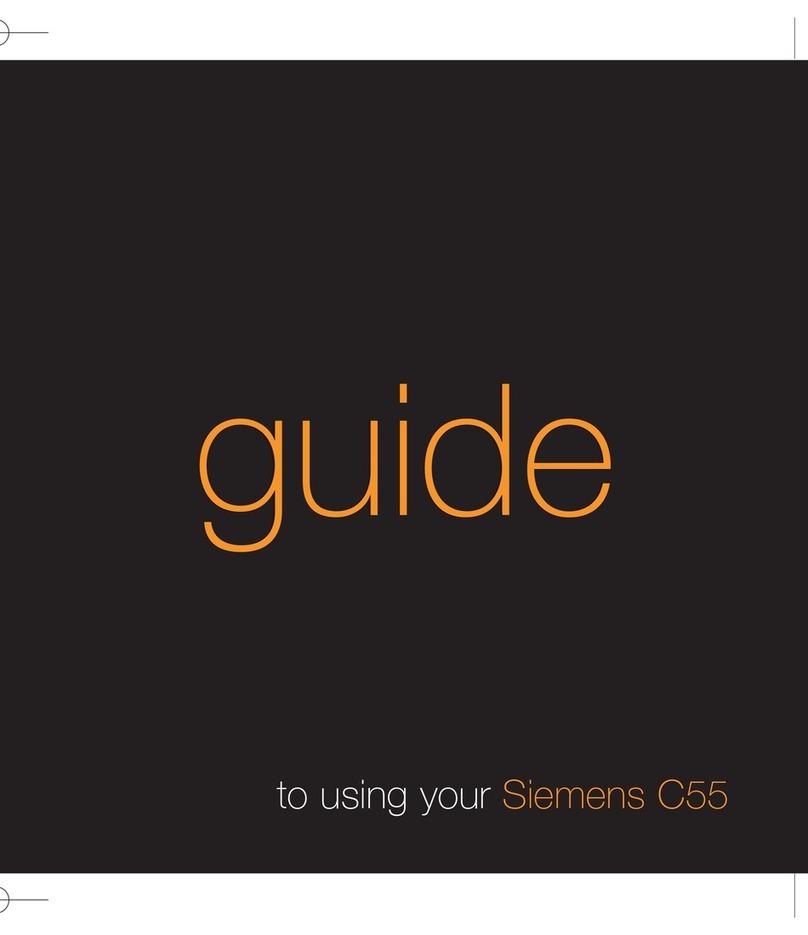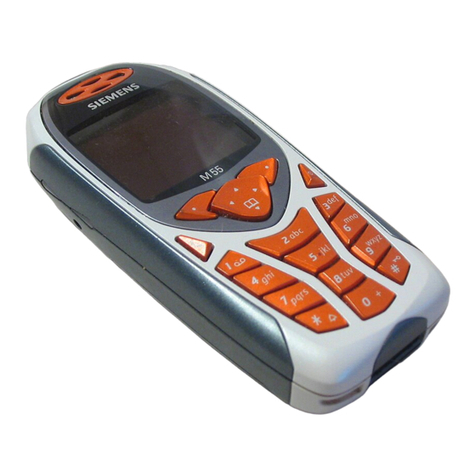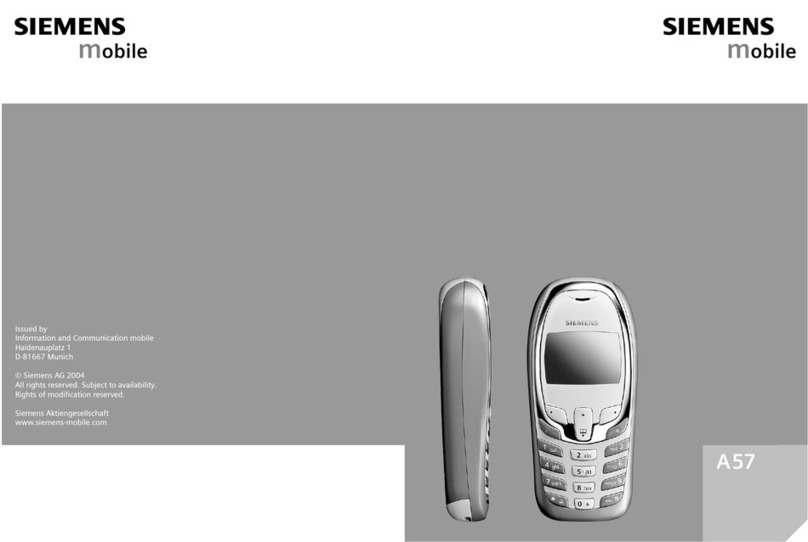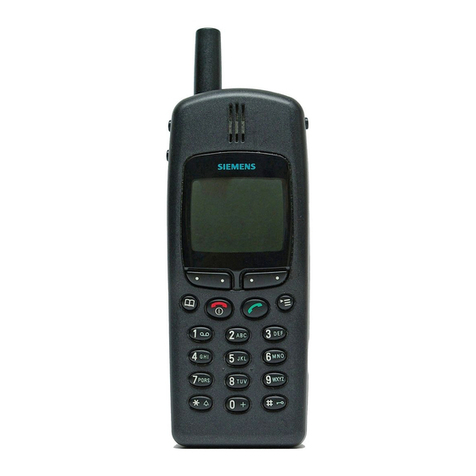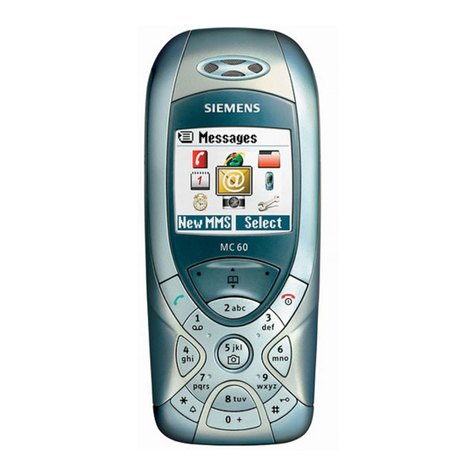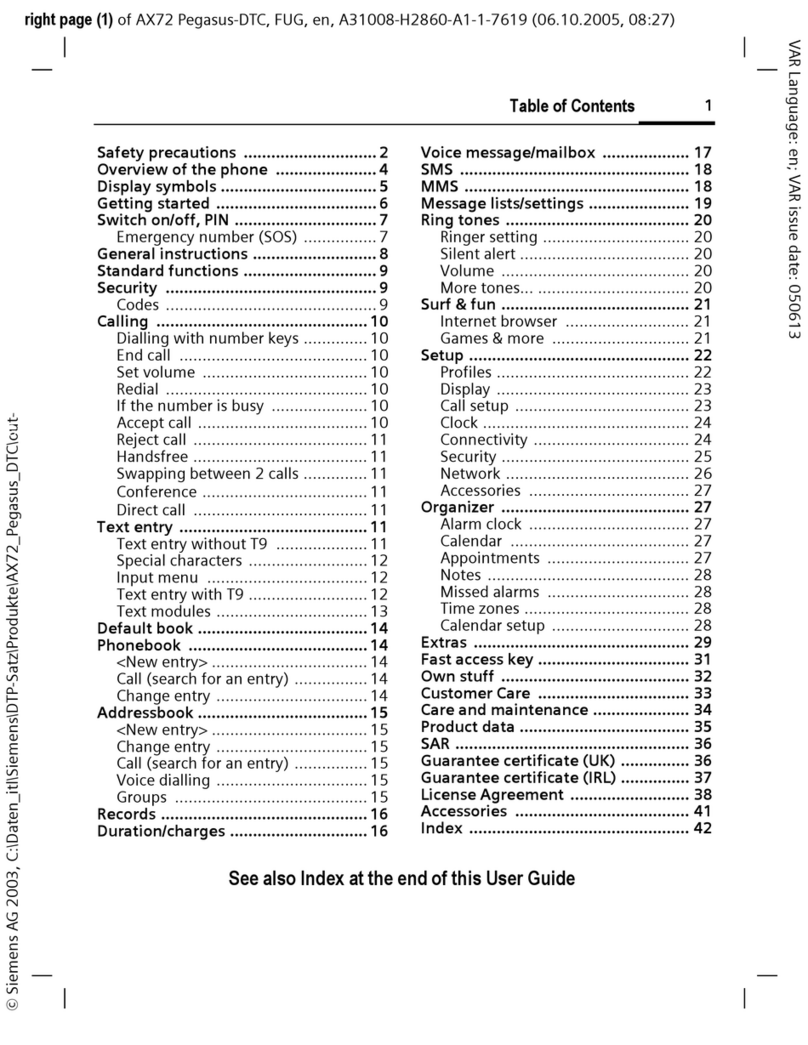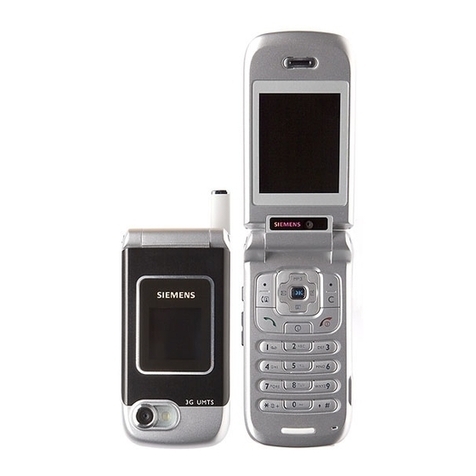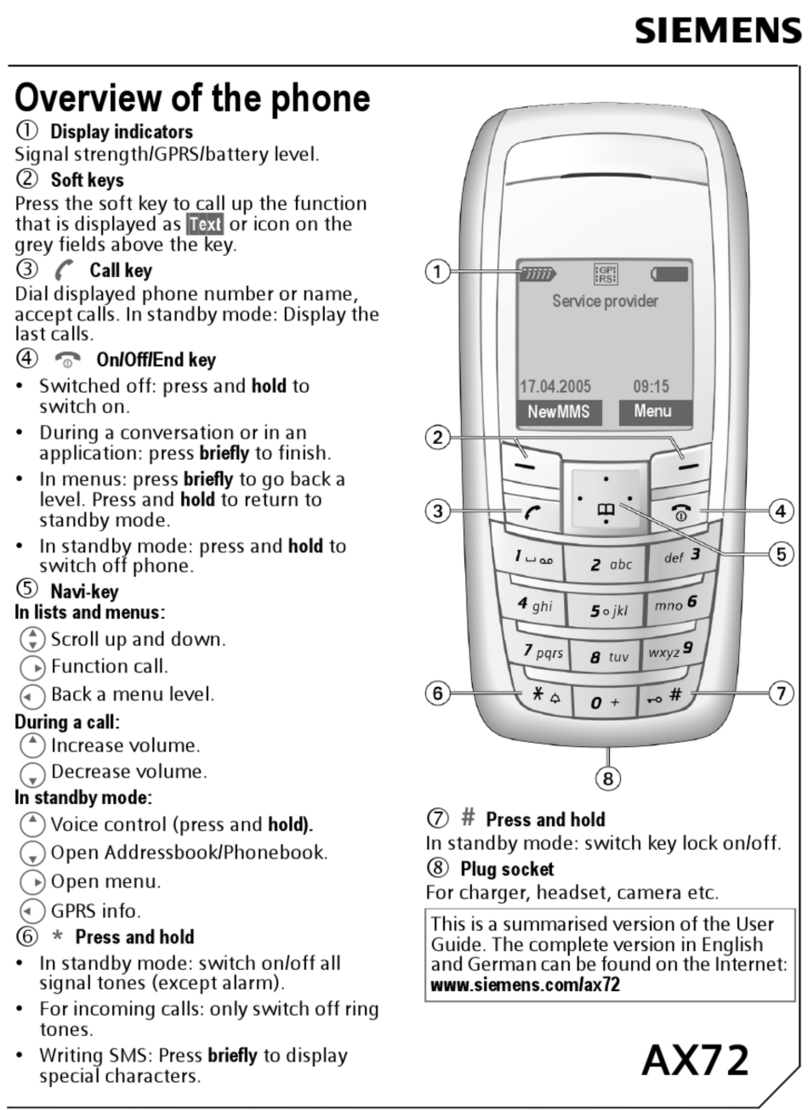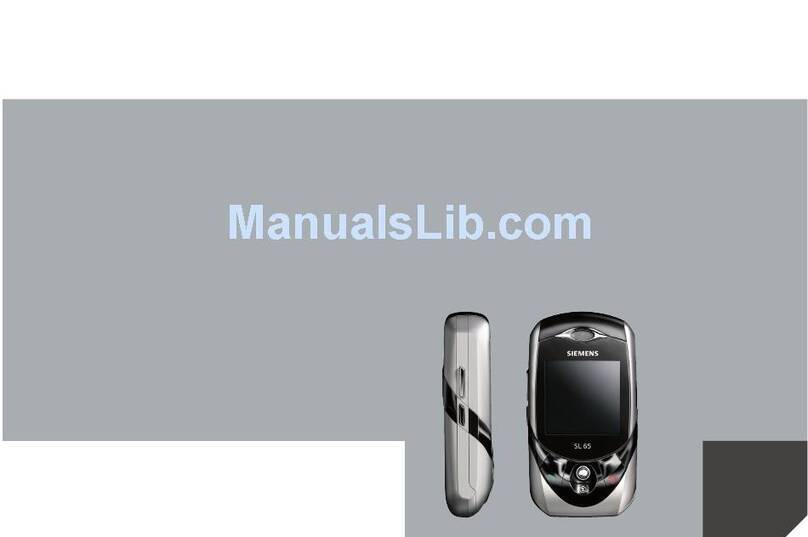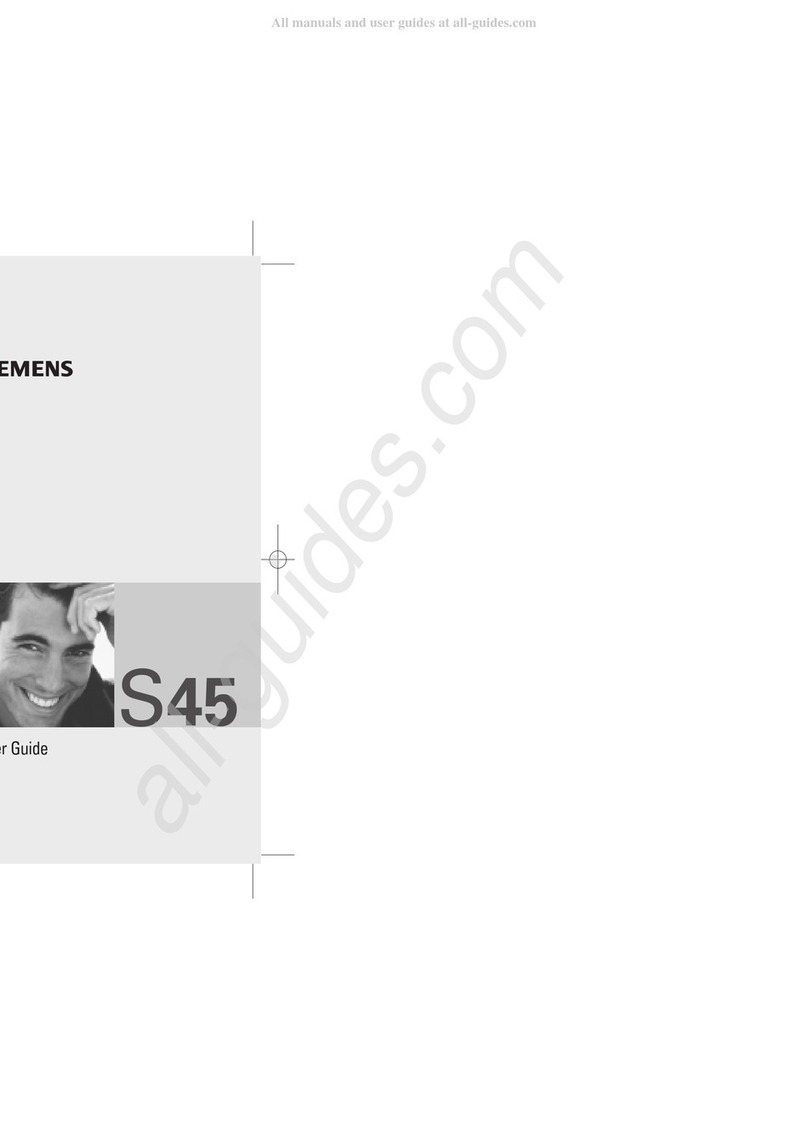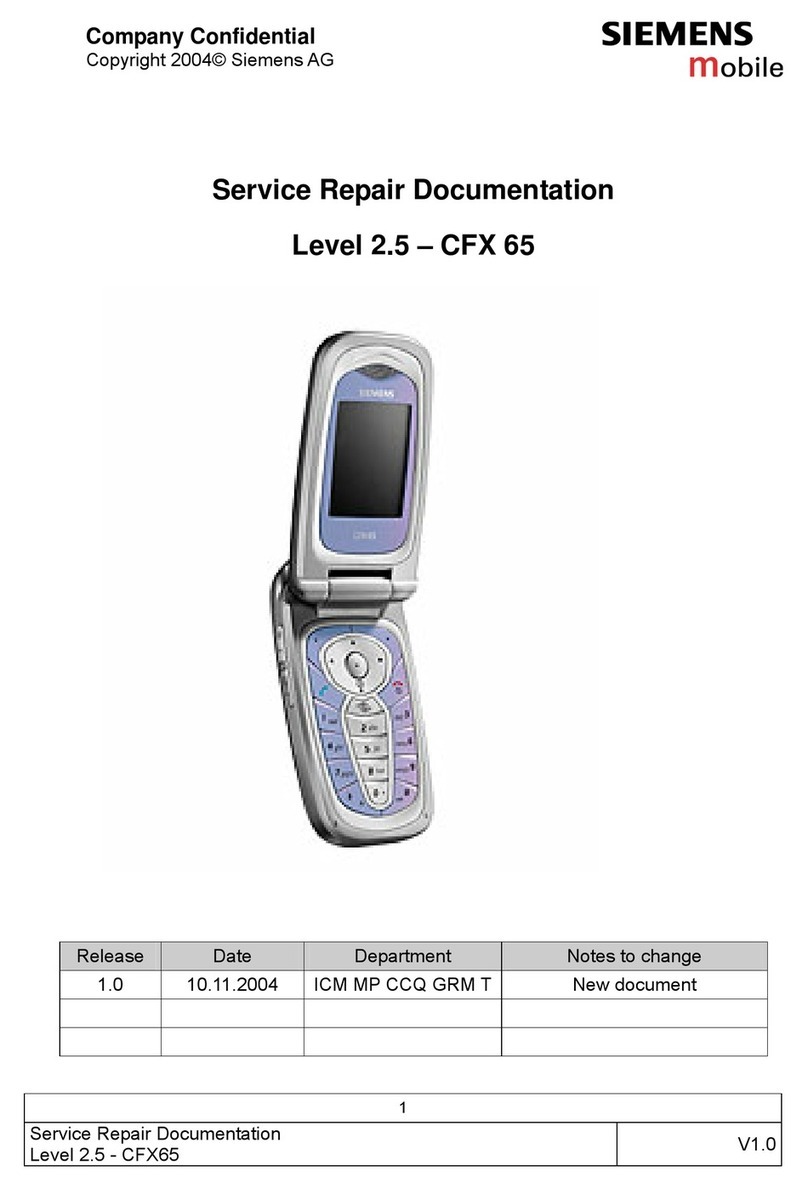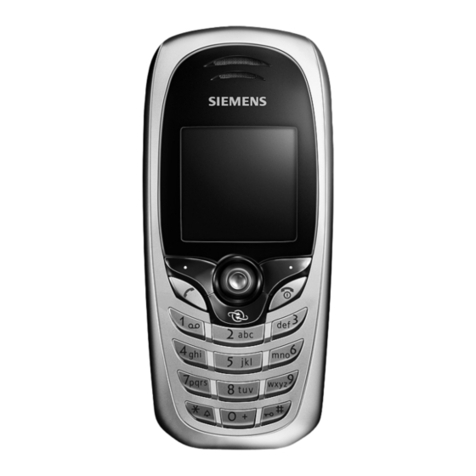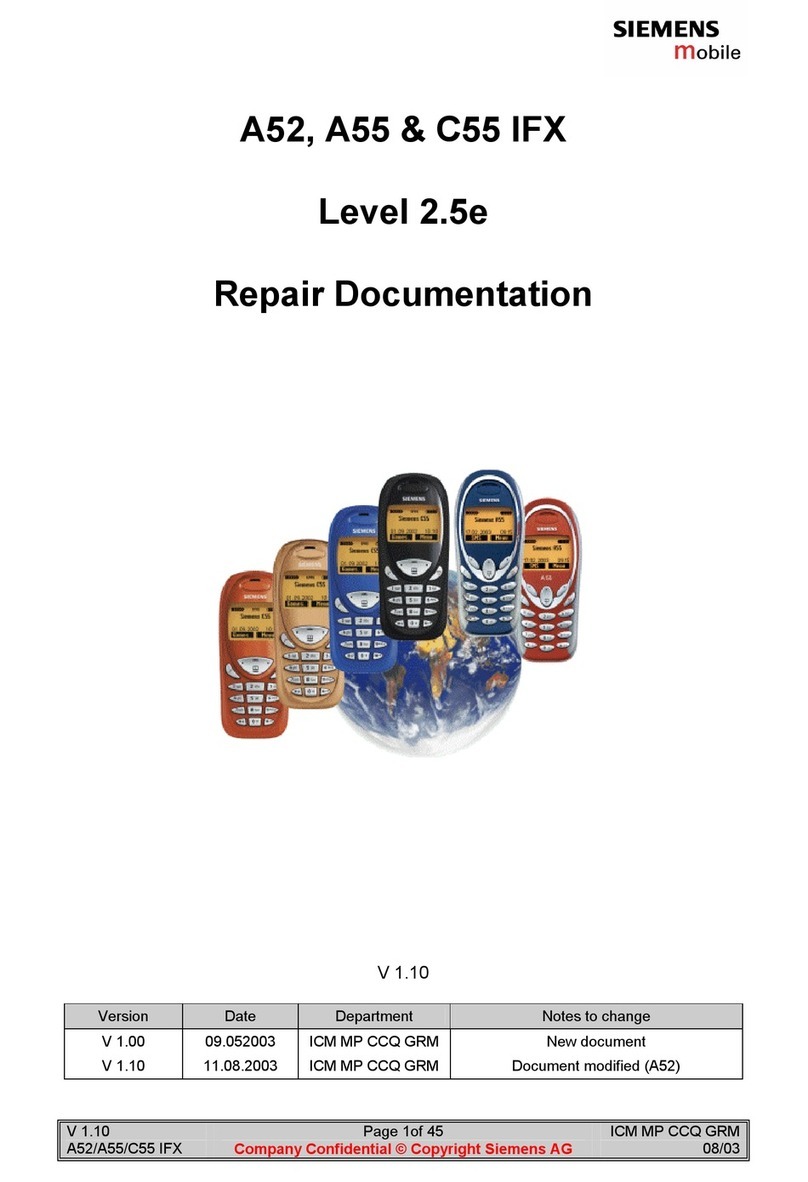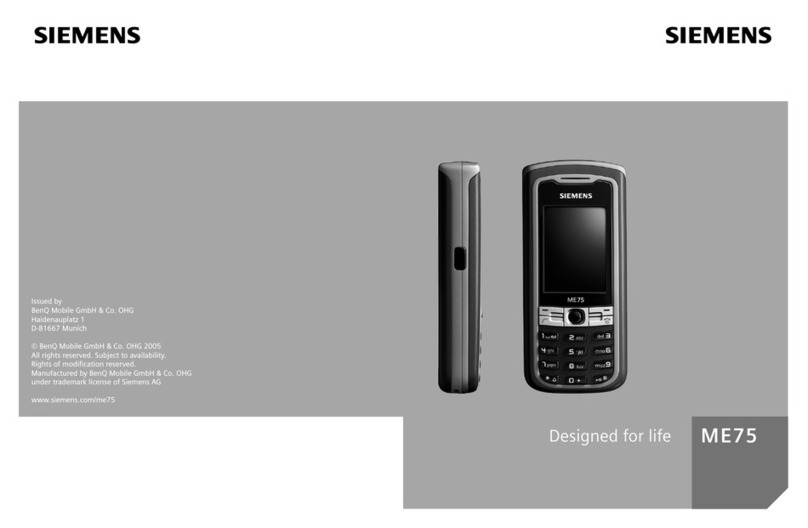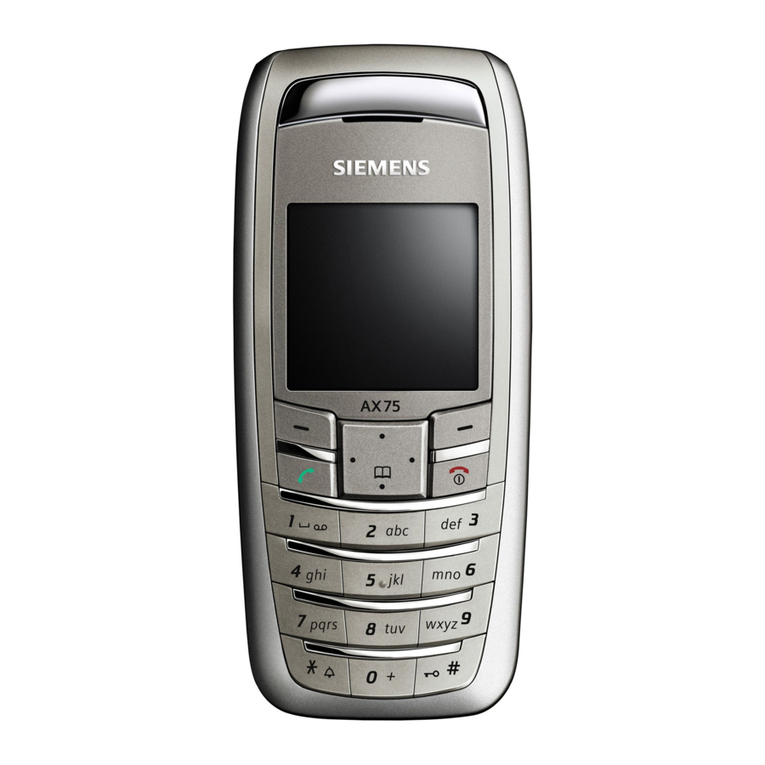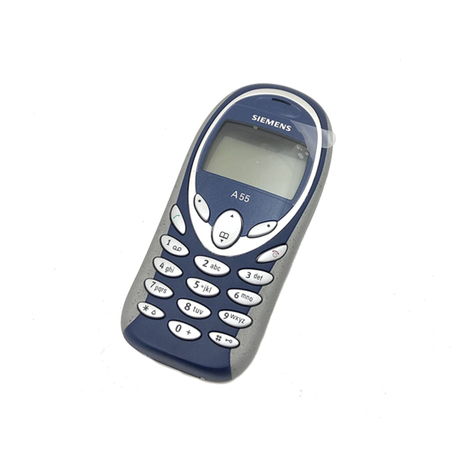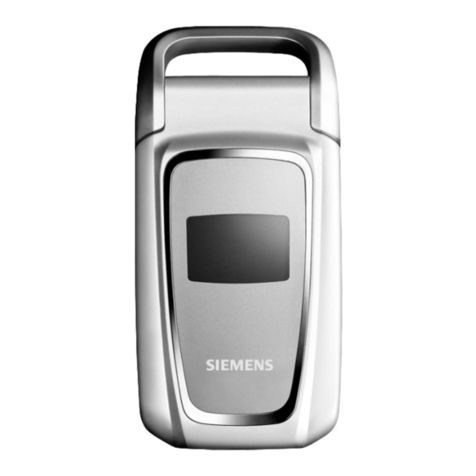Legal Notices
The mobile phone described in this guide is approved for use on the GSM and GPRS networks
operating on the GSM 850/900/1800/1900 bands. It is approved for use in the country where it
was originally sold and may be approved for use in other countries.
© 2004 Siemens Information and Communication Mobile, LLC. All rights reserved.
Siemens and the SX66 model phone are trademarks or registered trademarks of Siemens AG
and/or its afliates in the United States and/or other countries.
Disclaimer
THE INFORMATION CONTAINED IN THE USER GUIDE IS WRITTEN FOR THE SX66 PHONE.
SIEMENS RESERVES THE RIGHT TO MAKE CHANGES AND IMPROVEMENTS TO THE
PRODUCTS AND ANY OF THE FEATURES OF THE PRODUCTS DESCRIBED IN THIS
DOCUMENT WITHOUT PRIOR NOTICE. THE CONTENTS OF THE USER GUIDE ARE PRO-
VIDED “AS IS”. EXCEPT AS REQUIRED BY APPLICABLE LAW, NO WARRANTIES OF ANY
KIND, EITHER EXPRESS OR IMPLIED, INCLUDING, BUT NOT LIMITED TO, THE IMPLIED
WARRANTIES OF MERCHANTABILITY AND FITNESS FOR A PARTICULAR PURPOSE, ARE
MADE IN RELATION TO THE ACCURACY, RELIABILITY OR CONTENTS OF THIS DOCU-
MENT. SIEMENS RESERVES THE RIGHT TO REVISE THE USER GUIDE OR WITHDRAW IT
AT ANY TIME WITHOUT PRIOR NOTICE. UNDER NO CIRCUMSTANCES SHALL SIEMENS
BE RESPONSIBLE FOR ANY LOSS OF DATA OR INCOME OR ANY SPECIAL, INCIDENTAL,
CONSEQUENTIAL OR INDIRECT DAMAGES HOWSOEVER CAUSED.
Export Information
The mobile phone may be subject to export regulation of the United States and other countries.
Diversion contrary to law is prohibited. You must comply with all applicable export laws, restric-
tions and regulations of the United States foreign agencies or authorities, and may not export,
or transfer for the purpose of re-export, the mobile phone or any part of the phone in violation of
any applicable restrictions, laws or regulations, or without all necessary approvals.
Network Services
A number of features included in this guide are called Network Services. They are special ser-
vices provided by wireless service providers. In order to use any of these Network Services, you
must subscribe to these service(s) from your service provider and obtain instructions for their
